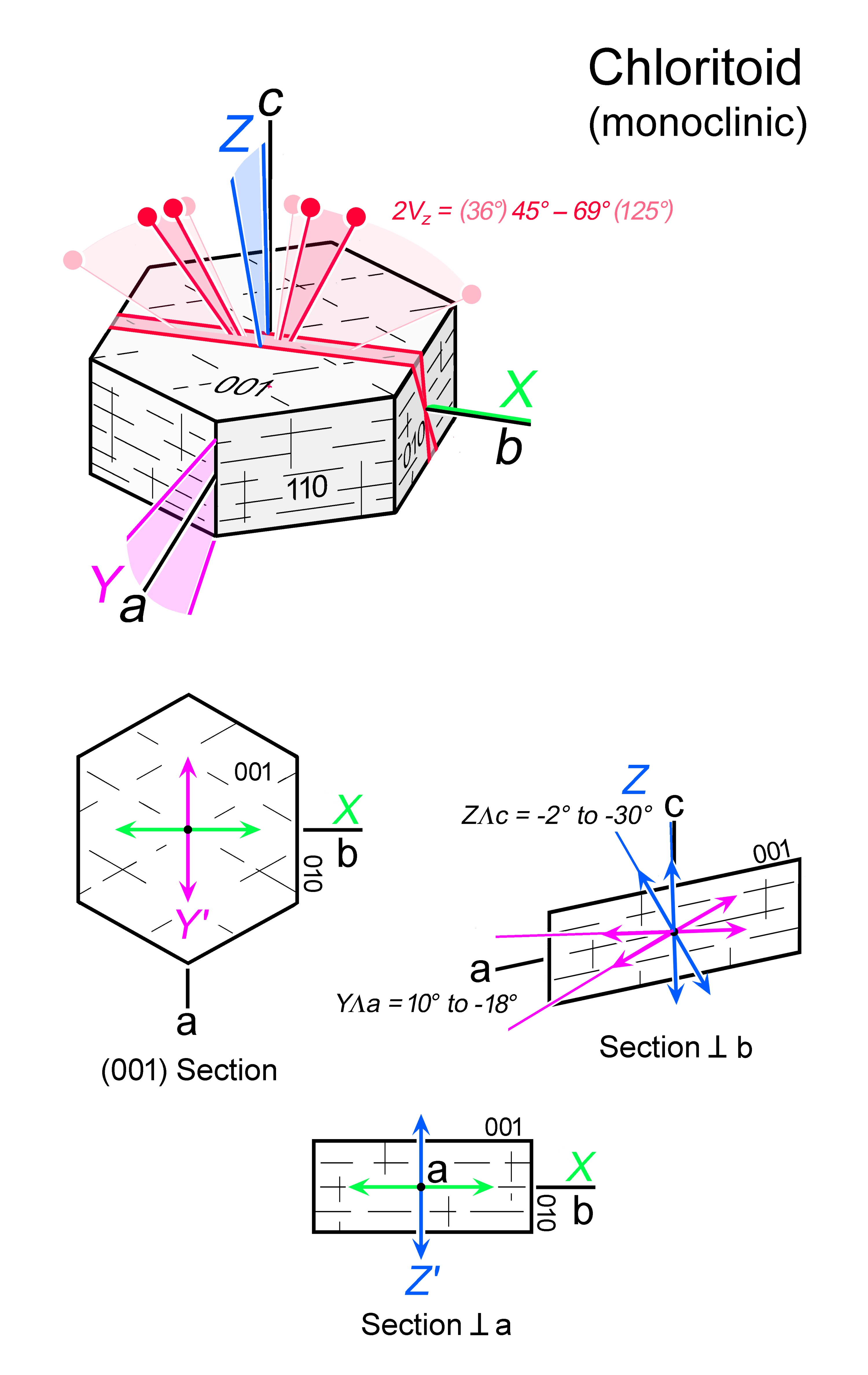|
| Formula | (Fe,Mg,Mn)2(Al,Fe3+)Al3O2[SiO4]2(OH)4 |
| | Optic class & sign | Biaxial positive or negative |
| | Optical orientation | Highly variable due to multiple polymorphic varieties; monoclinic: a near X or Y, b = Y or X, c near Z |
| | Optical plane | (010) |
| | Relief | High |
| | Refractive indices | nx = 1.705 -1.730
|
|
ny = 1.708 -1.734
|
|
nz = 1.712 -1.740
|
|
| Mn and Mg-rich varieties have lower n than Fe-rich ones; n increases as Fe3+ substitutes for Al |
| | Birefringence (max.) | 0.005 - 0.022 |
| | | Masking of interference colours by mineral colour may occur in strongly coloured varieties |
| | Optic Angle
| 2Vx
= 55 - 90° |
| | 2Vz
= 90 - 36° |
| | Sign of elongation | Length-fast, l (-) |
| | Interference figure | Sections ⊥ c yield nearly centred Bxa figures; monoclinic varieties are usually positive, triclinic varieties are usually negative |
| | Colour / pleochroism | Colour and pleochroism variable; green, blue, colourless; if coloured pleochroic Y > X > Z, with X = pale green, grey-green, Y = blue-grey, indigo-blue, blue-green, Z = colourless, pale yellow, pale green; colour zoning may occur |
| | Zoning | |
|
|
| Form | Habit | Platy; hexagonal cross-sections ⊥ c; inclusions may be arranged in an hourglass pattern (best visible in sections at a high angle to (001) |
| | | Surface | Commonly subhedral to euhedral |
| | Cleavage | {001} perfect; 2 sets {110} poor |
| | Twinning | Simple and lamellar on {001}, very common |
| | Extinction | Inclined with max ext angle up to 18° to {001} faces or cleavage |
|
|
| Reaction textures | Chloritoid breakdown reactions and related reaction textures may involve phases such as staurolite, chlorite, andalusite |
| | Alteration / decomposition | Chlorite, sericite, clay minerals |
|
|
| Occurence | Ign | |
| | | Met | Low- to medium-grade, Fe-Al-rich metapelites and semipelites; blueschists; magnesio-chloritoid is only stable at high pressure |
| | | Sed | |
| | | Hyd | Quartz-carbonate veins; hydrothermally altered rocks |
| | | Other | |
|
|
| Distinctive properties | High relief, characteristic form and twinning, colour; hourglass structure is distinctive |
| | Additional comments | Most chloritoid has monoclinic symmetry, but triclinic varieties also occur. Mn-rich chloritoid is called ottrélite. Chloritoid in phyllites and schists tends to form inclusion-rich porphyroblasts. |
|
|

 Images
Images 


 Images
Images 
